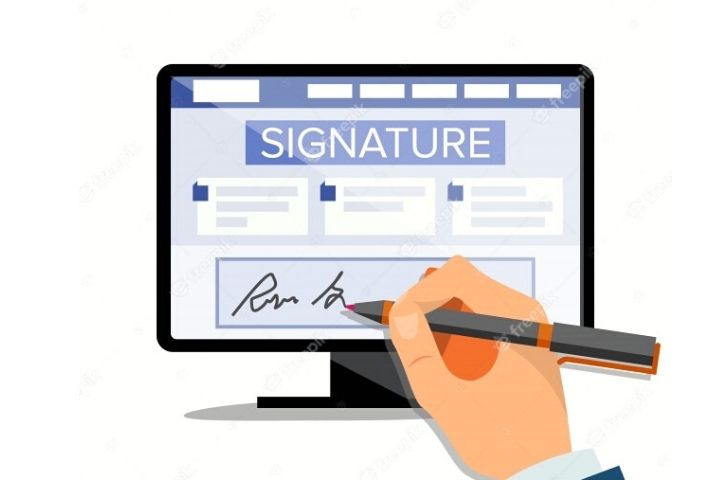Advanced Electronic Signature, Do You Know What It Is?

The advanced electronic signature is already part of the business processes of many national and international companies, but it is not yet 100% implemented in the business fabric of our country.
In today’s article we will try to clear up some of the most common doubts that arise when talking about the electronic signature: what is it, what are the different types of electronic signature recognized by current Spanish legislation and, very importantly, how can we integrate the electronic signature advanced in our business processes. Shall we start?
Table of Contents
Types Of Electronic Signature
Law 59/2003, of December 19, on Electronic Signature distinguishes between three types of signature:
- electronic signature
- Advanced electronic signature
- Recognized advanced electronic signature
Let’s see the definition of each of these types of electronic signature.
We define electronic signature as that set of identification data that, in electronic format, allows us to identify the signer of a digital document.
We define an advanced electronic signature as an electronic signature that meets a series of basic requirements:
- It has been created by technological means controlled exclusively by the person who digitally signs the document.
- Identifies the signatory and the data that has been signed unequivocally.
- Detects any changes that have been made to the electronically signed document (even if that change was made after it was electronically signed).
Finally – and according to current legislation – we will define a recognized electronic signature as that advanced electronic signature that has been generated by means of a secure and armored technological device .
To be valid, the recognized advanced electronic signature has to meet a series of quite demanding requirements. We see it in detail in the next section.
What Is The Advanced Electronic Signature For?
Implementing the advanced electronic signature in the different areas of your company is another way to optimize business processes through automation. Thus, we can affirm without a doubt that implementing this type of electronic signature is essential to improve the performance of paperless offices, of those effective and efficient businesses of the 21st century that work collaboratively and online.
If you want more information about what the advanced electronic signature is and what it is for, you should know that the PAE – Electronic Administration Portal of the Government of Spain – has published an interesting online material entitled ” Legal Base of the Electronic Signature“.
The Recognized Advanced Electronic Signature
The recognized advanced electronic signature is the only one that the law equates with a traditional handwritten signature . This information is very important since the implementation of this type of signature in our business processes will allow us to shield and guarantee absolutely all the agreements and optimize the work processes that we carry out worldwide.
Two other important features of this advanced and recognized electronic signature:
1. It is based on one of the officially recognized digital certificates. In Spain, these electronic certificates must be recognized by the Ministry of Industry and Commerce and, of course, appear in the list of electronic certificates published on the website of that Ministry.
2. It is generated by a completely reliable and absolutely shielded electronic signature generation device; a software that guarantees the secure encryption of the contents that appear in the document to be signed.
How To Integrate The Advanced Electronic Signature In Your Workflows?
Integrating the advanced electronic signature in your paperless office is much easier than you imagine. You simply have to choose an absolutely reliable BPM tool.






